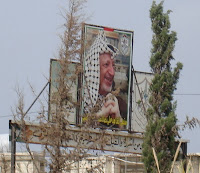 I went down a side street because I saw this beautiful building from afar. Upon closer inspection, it was covered in shell and bullet holes.
I went down a side street because I saw this beautiful building from afar. Upon closer inspection, it was covered in shell and bullet holes. A kid, Ivan, gave us a tour of the town. He was 11 when the war began, and is one of the few people who are more than happy to talk about it and have moderate views. Later that night we talked after everyone else had gone to bed and he said that at the time, he was really nationalistic, really angry because all he knew was his life was being turned upside-down and his dad had to go to the trenches. But now he recongnizes that the war was more in shades of gray, that both (in fact, all, international forces included) were party to atrocities. He thought that communication between ethnicities would go a long way toward peaceful coexistance. He told me an example of this, how throughout Croatia they use these 'Hepo' cubes to help light fires. Everyone pronounces it like you probably just read it, kind of like 'hippo.' But these cubes are made in Serbia, which uses the Cyrillic alphabet. Read in Cyrillic, it's pronounced 'Nero,' like the emperor. But no one in Croatia had ever talked to a Serb or even realized it was in a different alphabet. His friends are still amazed when he corrects their pronounciation. He says it's like an epiphany.
The next day my fellow travelers took a canoe (sp?) trip. It was a bit expensive and not really my cup of tea, so I stayed back and wandered around town for a few hours. I started off in the daily Central Market, a huge farmers market with fresh produce and some clothes. Then I wandered around, through the underground mall and all around town. I did a bit of shopping-clothes are much cheaper here- and then managed to get myself lost for a good hour and a half in this tiny town. Go figure.

















































